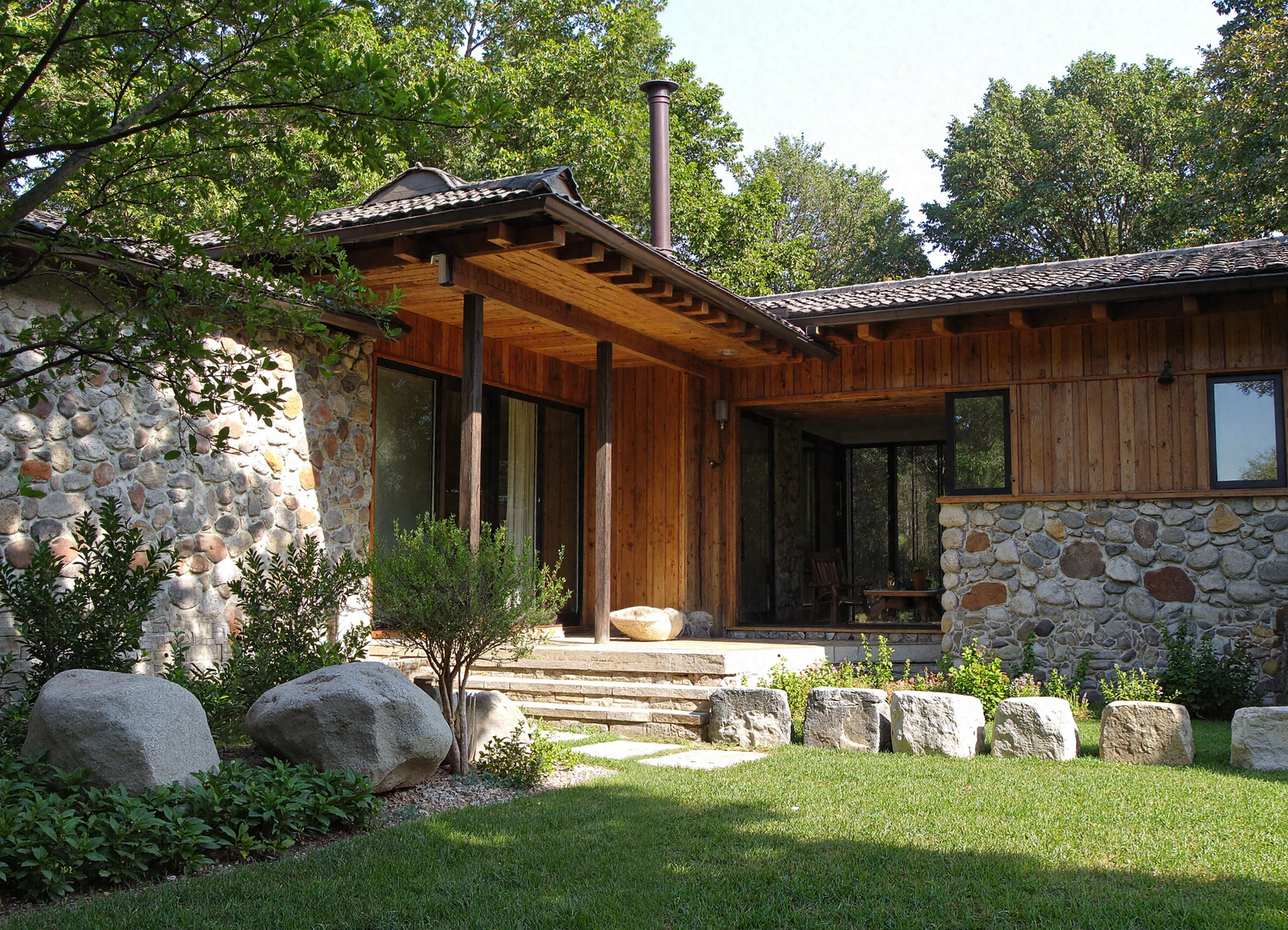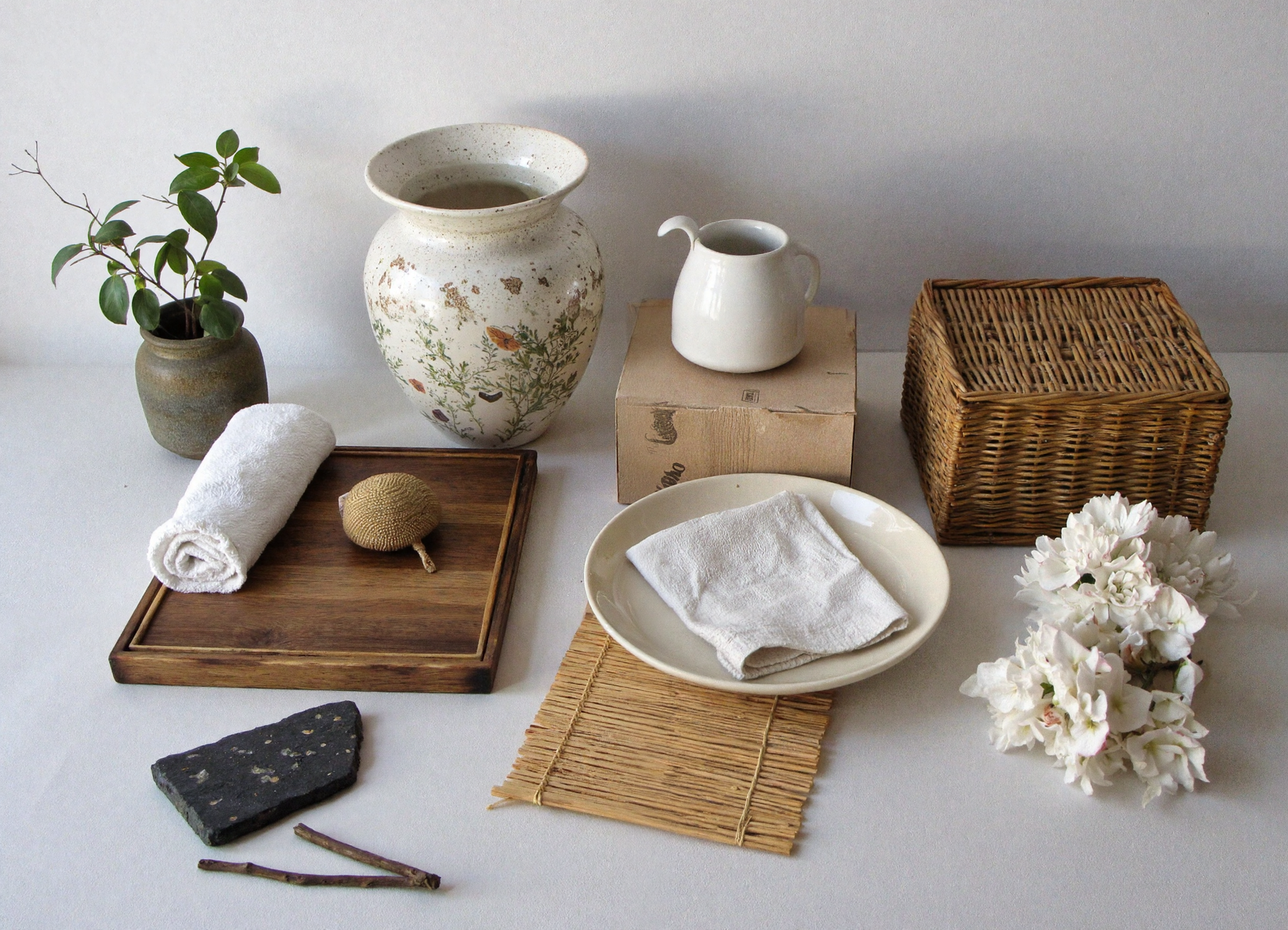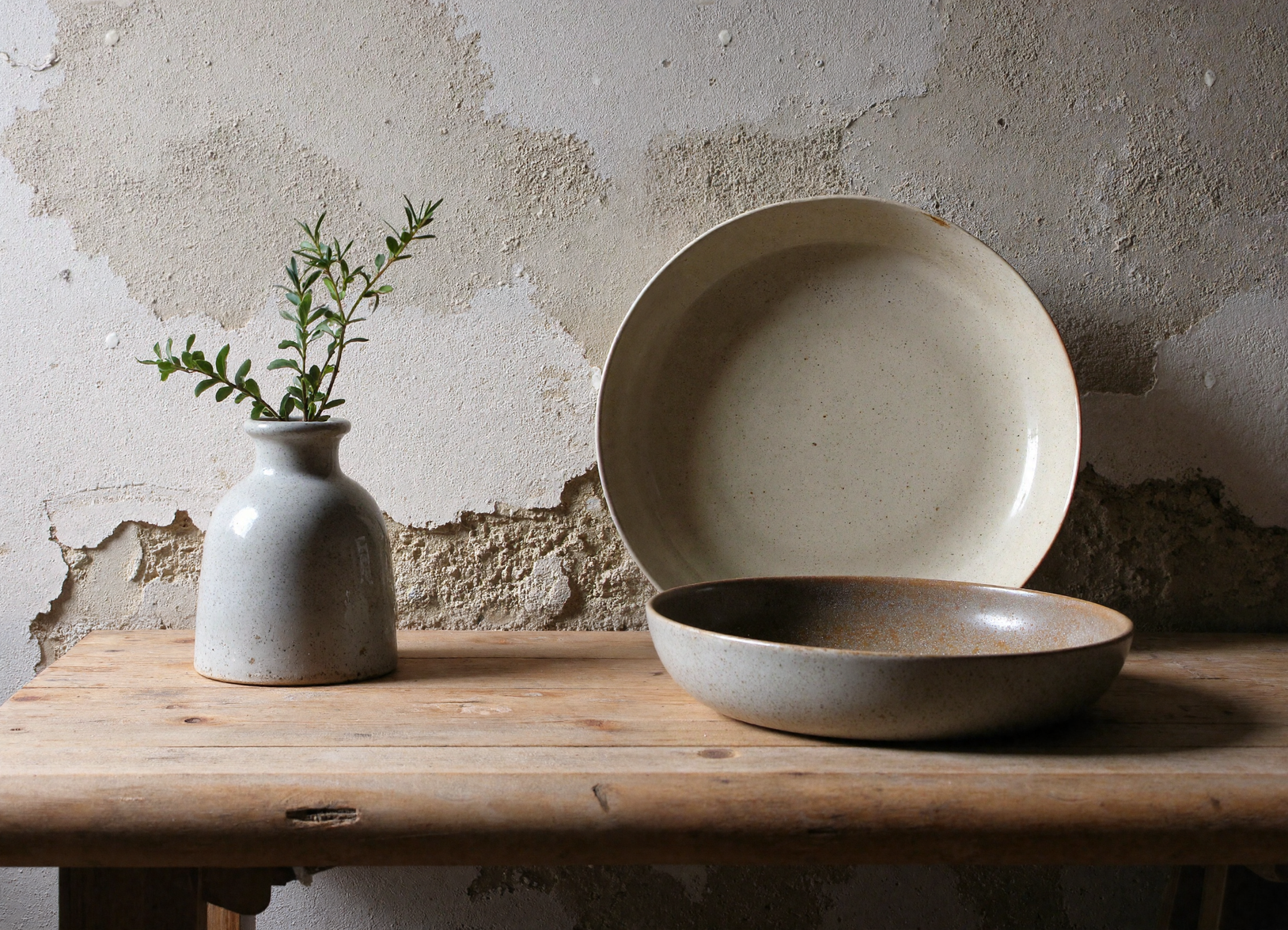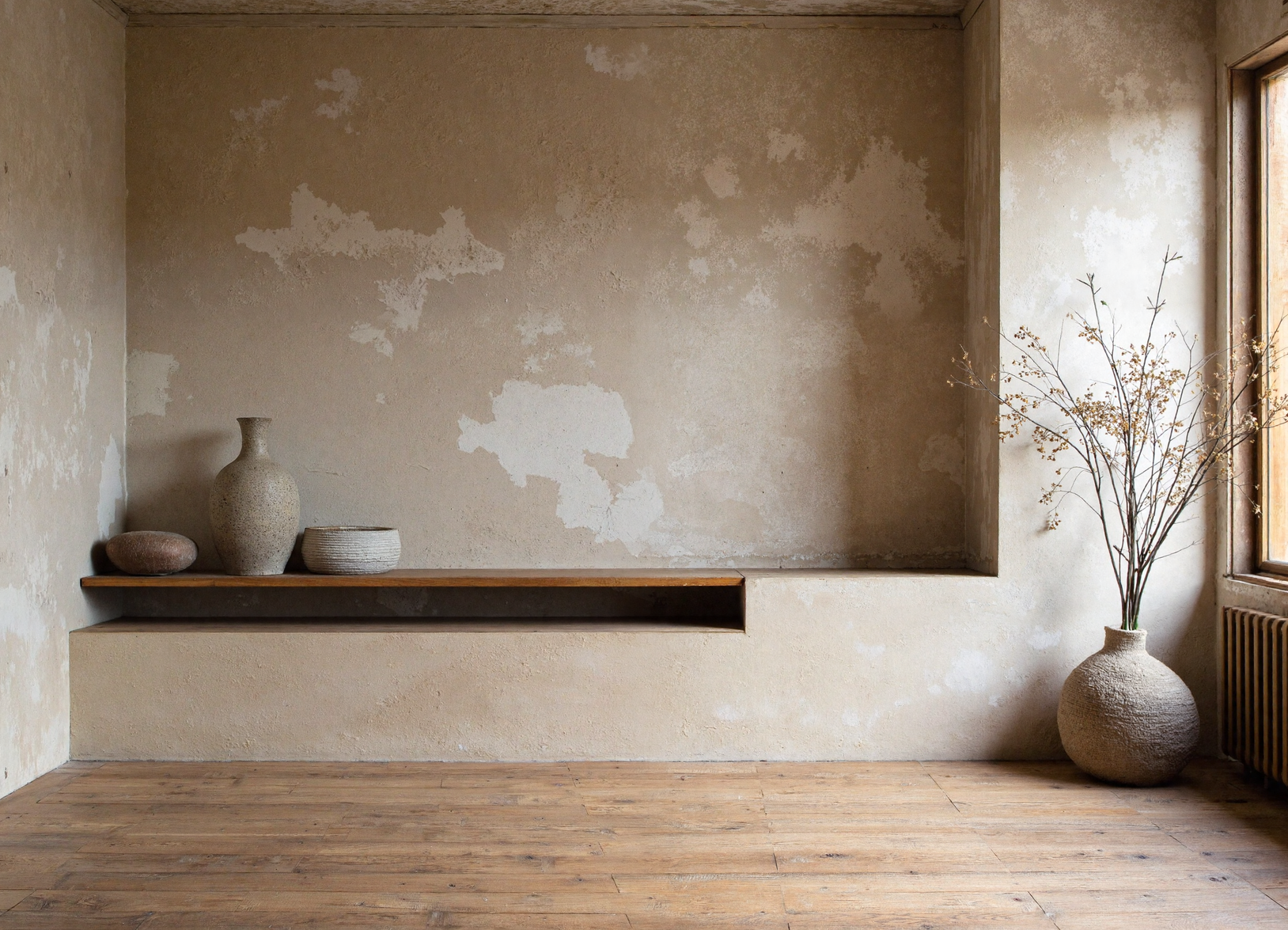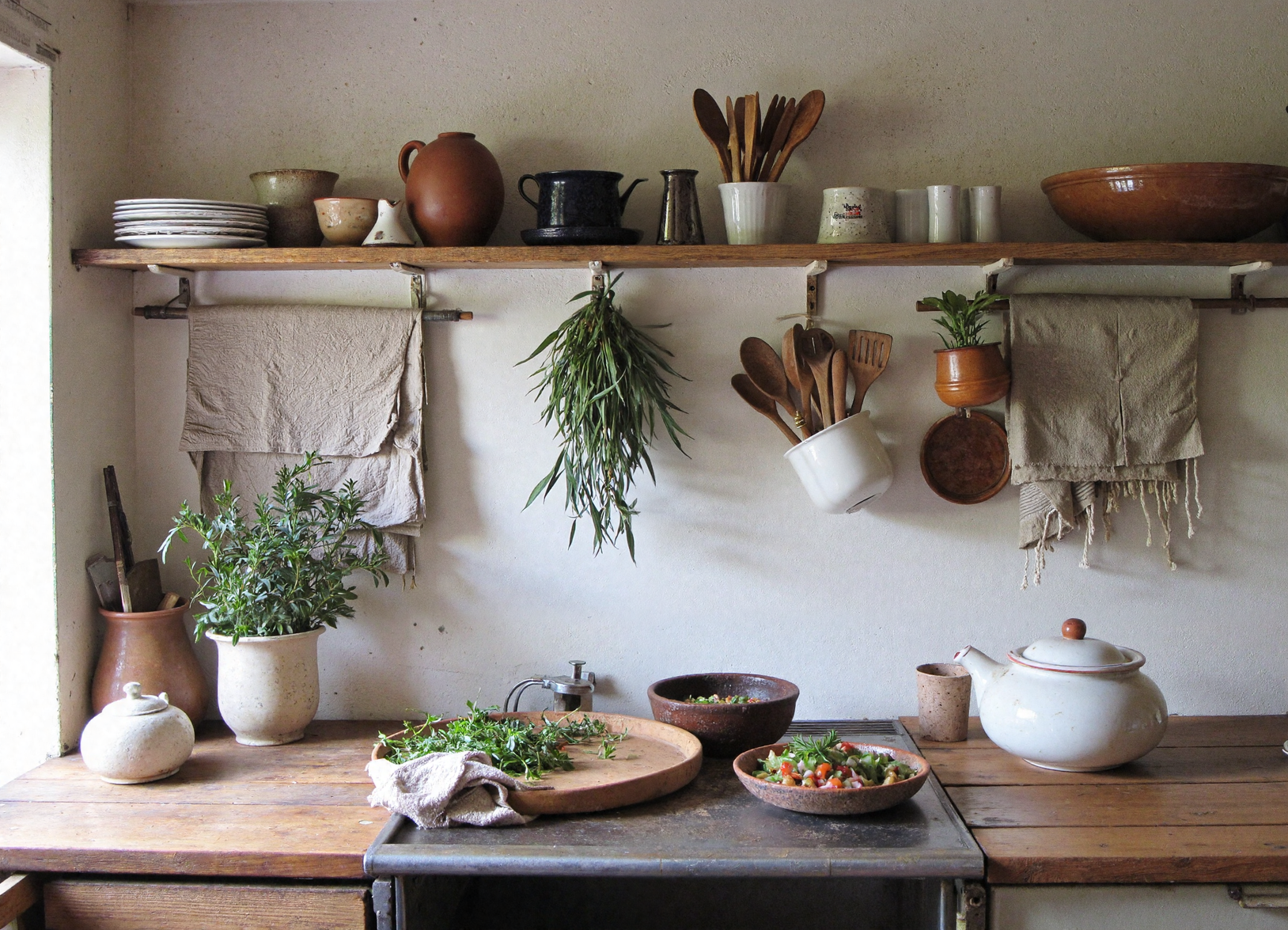Wabi-Sabi: The Art of Imperfect Beauty in Interior Design
In a world where homes are perfectly arranged and surfaces gleam, wabi-sabi offers a refreshing contrast: it values imperfections, unfinished spaces, and the gentle beauty of things left undone.
A wabi-sabi space is not just about looks — it reflects a life lived fully. It embodies the warmth of time passing, the natural flow of seasons, and the calm of simplicity. It is not about extreme minimalism or maximalism, but about capturing essence, presence, and the art of letting go.
This wabi-sabi house beautifully combines rustic wood, natural stone, and earthy textures, creating a peaceful, harmonious atmosphere that embraces imperfection and organic beauty.
Originating in Japan, wabi-sabi is a philosophy that honors stillness, rich textures, humility, and an appreciation for life as it is. Embracing wabi-sabi in your home creates a true sanctuary—one where imperfections are welcomed, promoting a sense of peace and authenticity.
What Is Wabi-Sabi?
Wabi-sabi is more than just a fleeting trend — it's a profound and meaningful way of seeing and experiencing life in all its complexities. Originating from Zen Buddhism and deeply linked to traditional Japanese tea ceremonies and nature rituals, it beautifully embraces the idea that change and imperfection are not only natural but also meaningful aspects of existence.
Here, beauty is not defined by perfect symmetry or flawless features — instead, it emerges from the unique charm that comes with aging, wear, and use. Rather than simply discarding broken items, they are cherished, displayed with care, and beautified through the art of repair, with kintsugi exemplifying this belief in a strikingly artistic manner.
Let’s break it down:
Wabi (侘)
Traditionally, wabi refers to a rustic, humble simplicity. A worn wooden bench. A handwoven mat. A single flower in a recycled glass jar. It’s about living with little—yet feeling full.
Wabi is the aesthetic of quiet mindfulness. Of contentment with solitude. Of the serene, imperfect, earthy.
Sabi (寂)
Sabi speaks to the beauty of age and impermanence. The peeling wall that reveals layers beneath. The tea bowl that has been used a thousand times. The softness of time’s fingerprints.
Sabi is dignity in weathering. It’s the poetry of things becoming what they were always meant to be.
Together, wabi-sabi invites us to live in harmony with life’s natural rhythms—aging, fading, breaking, returning. It asks us to create homes that aren’t showrooms, but soul rooms.
The Mood:
Stillness, Acceptance, Earth
To enter a true wabi-sabi space is to immerse yourself in a different kind of pace of living, one that invites a sense of tranquility and mindfulness.
Time seems to slow down, allowing you to be present in the moment. Your shoulders gently drop, and your breath deepens in a soothing rhythm.
These are not glossy, pristine spaces where everything matches perfectly. Instead, they are rich in texture, shadowed in soft light, and layered in ways that invite curiosity. They hold stories of their own, each element adding character and depth.
The walls may be uneven, adding to their charm — the floorboards might creak underfoot, echoing memories of time passed.
The vase on the shelf may be slightly chipped, but it is this imperfection that adds to its allure.
Everything in the space feels honest and authentic. Wabi-sabi interiors speak softly in low tones, exuding a sense of calm. They do not beg for attention or demand to be noticed. Instead, they linger in your mind — quietly, deeply, offering peace and simplicity.
They offer:
Stillness: A chance to pause and ground yourself
Acceptance: A space where nothing has to be perfect
Earthiness: Materials and forms that feel rooted, not synthetic
This mood isn’t staged—it’s cultivated.
Key Principles of Wabi-Sabi Interiors
1. Natural Materials
At the heart of the wabi-sabi philosophy lies a profound, almost spiritual connection to the earth and all its wonders. In this aesthetic, plastic, high-gloss finishes, and the relentless pursuit of manufactured perfection give way to materials that genuinely reflect nature’s slow, intricate work. Emphasizing authenticity and the beauty found in imperfection, wabi-sabi invites us to appreciate the organic qualities of each element.
Materials to embrace:
Wood – raw, stained, distressed, or reclaimed
Stone – slate, soapstone, marble with visible veining
Clay and ceramic – handmade, matte-glazed, irregular
Linen and cotton – unbleached, naturally dyed, softly wrinkled
Paper, rattan, bamboo – textured, organic, aged gracefully
Metal – iron, copper, or bronze with signs of patina
These materials change over time. They age, weather, soften. They respond to your touch, your light, your use. They evolve with you.
In a wabi-sabi home, this aging is not a flaw—it’s a feature.
2. Imperfection & Patina
Perfection is a concept foreign to wabi-sabi. Instead, this design approach finds beauty in things that have lived.
A table with a worn edge. A handmade plate that’s not quite symmetrical. A wall that reveals layers of old paint beneath the new. These elements are not errors. They are part of the story.
Embracing imperfection also means letting go of the need to “finish” a space. A room may remain unpainted for years. A shelf may stay half-styled. This incompleteness is not carelessness — it’s reverence for life’s evolving nature.
The home becomes an ongoing poem, never fully written.
3. Simplicity and Emptiness
Wabi-sabi is not merely about maximal displays of abundance or the starkness of minimalist austerity. Rather, it is about embracing the beautiful, balanced emptiness that thoughtfully holds presence, drawing attention to the inherent beauty in imperfections and the passage of time.
You might walk into a room and find:
One stool
One candle
A single vase on a windowsill
Bare floorboards and filtered light
And it feels complete.
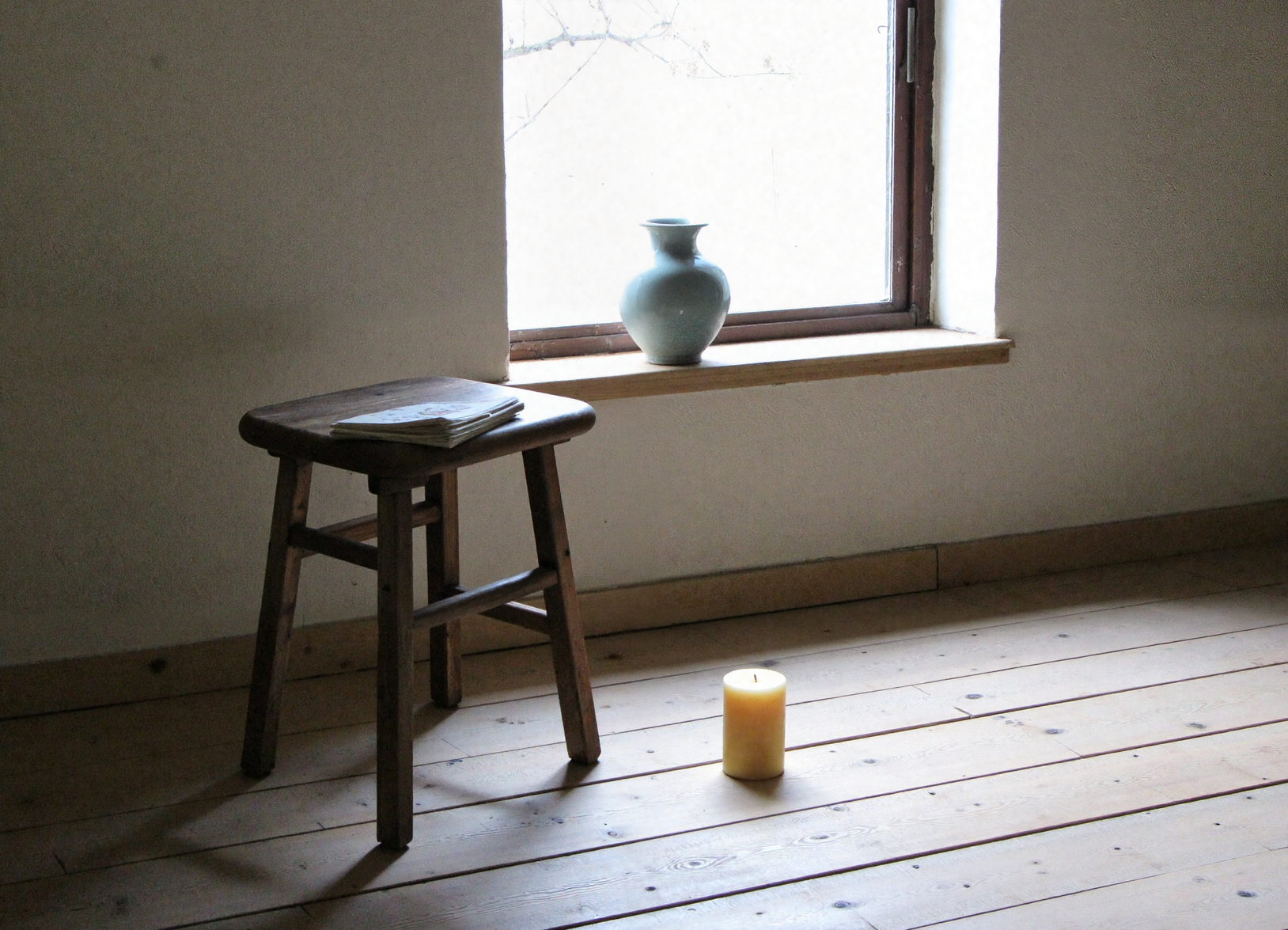

This form of simplicity does not feel sterile. It feels open. Like breath. Like space for being. It allows objects and people to exist without competition or chaos.
It asks: What do you truly need in this space? And often, the answer is far less than we assume.
4. Light and Shadow
Western design often tends to erase shadows completely—favoring overhead lights, stark white walls, and brightness at all costs. In contrast, wabi-sabi gently resists this overwhelming brightness. It invites a sense of softness over harsh shine, encouraging a more tranquil atmosphere. This philosophy embraces the way shadows gracefully gather in corners and between objects, allowing light to filter through gently, rather than blaze with intensity.
Think:
Shoji screens that soften the sun
Rice paper shades that glow gently
Low evening light dancing on a raw wood floor
These spaces shift with the day. You become aware of time, season, subtlety. You become more present.
Tanizaki’s essay In Praise of Shadows captures this beautifully—an ode to the emotional richness of dimness, age, and light left uncorrected.
Wabi-Sabi Color Palette:
Whispered by Nature
There is truly no room for harsh or overwhelming colors in the philosophy of wabi-sabi. Instead, the color palette is beautifully subdued — often consisting of layered neutrals, muted earth tones, and gently organic shades that evoke a sense of calm and serenity.
Base Tones:
Rice white
Putty beige
Stone grey
Clay pink
Soft black
Accents:
Dusty moss
Indigo washed with age
Burnt umber
Soot
Faded plum or ochre
The colors are quiet enough to rest your eyes on. They change with light. They don’t dominate. They soothe.
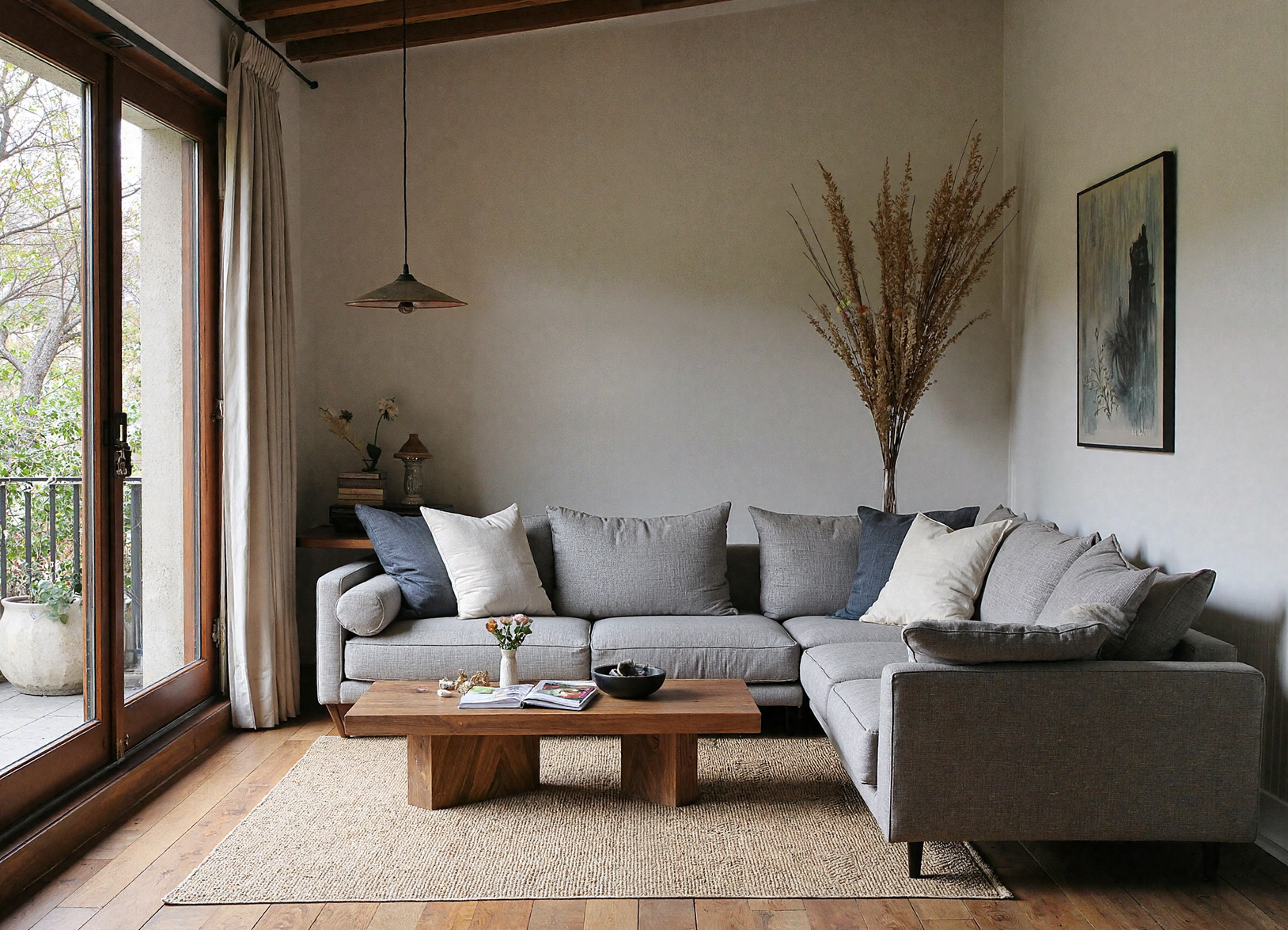


Furniture and Form: Simplicity with Soul
Wabi-sabi furniture is not mass-manufactured, but rather is unique and distinctive, showcasing the beauty of imperfection. It is often found in unexpected places, thoughtfully gifted by loved ones or meticulously crafted by skilled artisans, each piece embodying a thoughtful touch.
Additionally, these items may be repaired with genuine care, or lovingly inherited from previous generations, carrying with them rich histories. Each piece feels like it naturally belongs to the space, harmoniously integrated and never imposed on it, adding not only character but also a profound sense of story and warmth to your home.
Characteristics:
Organic shapes and asymmetry
Low seating or floor seating
Handmade over factory-made
Imperfect joints, visible nails, worn edges
Patina, not polish
A table passed down from family. A cabinet with uneven drawers. A chair with a slightly frayed cushion. These items are not “ugly”—they are alive.
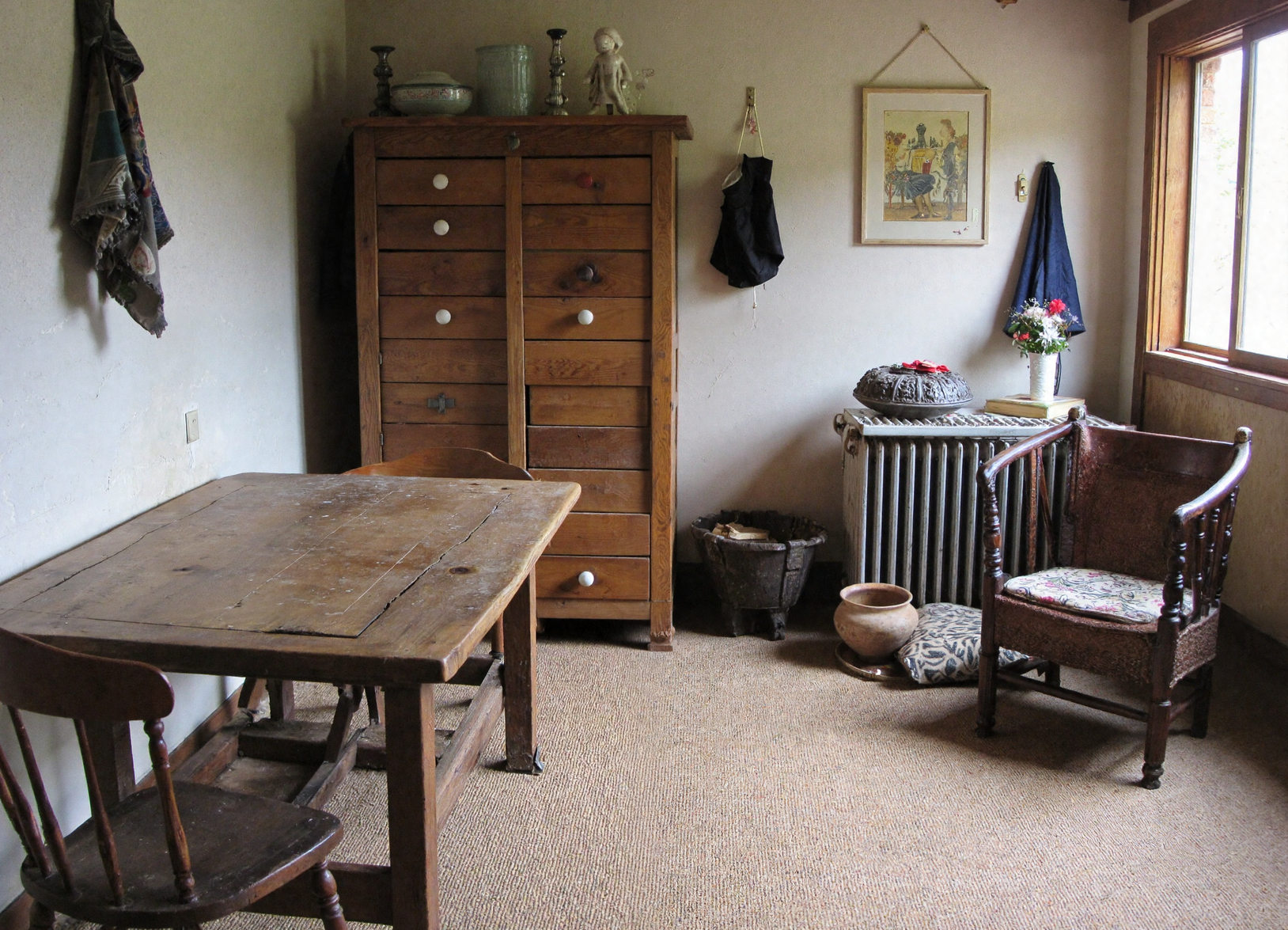
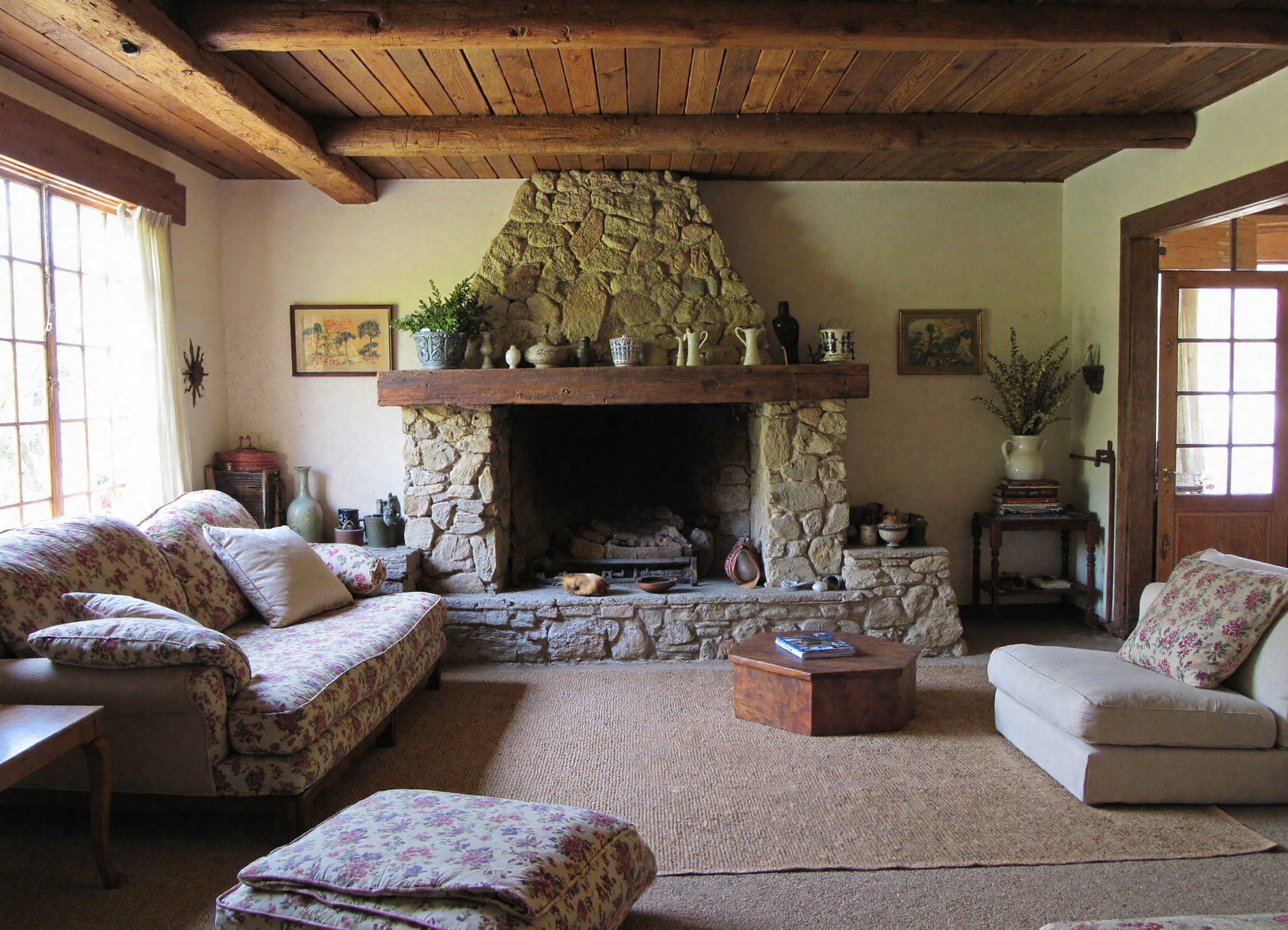
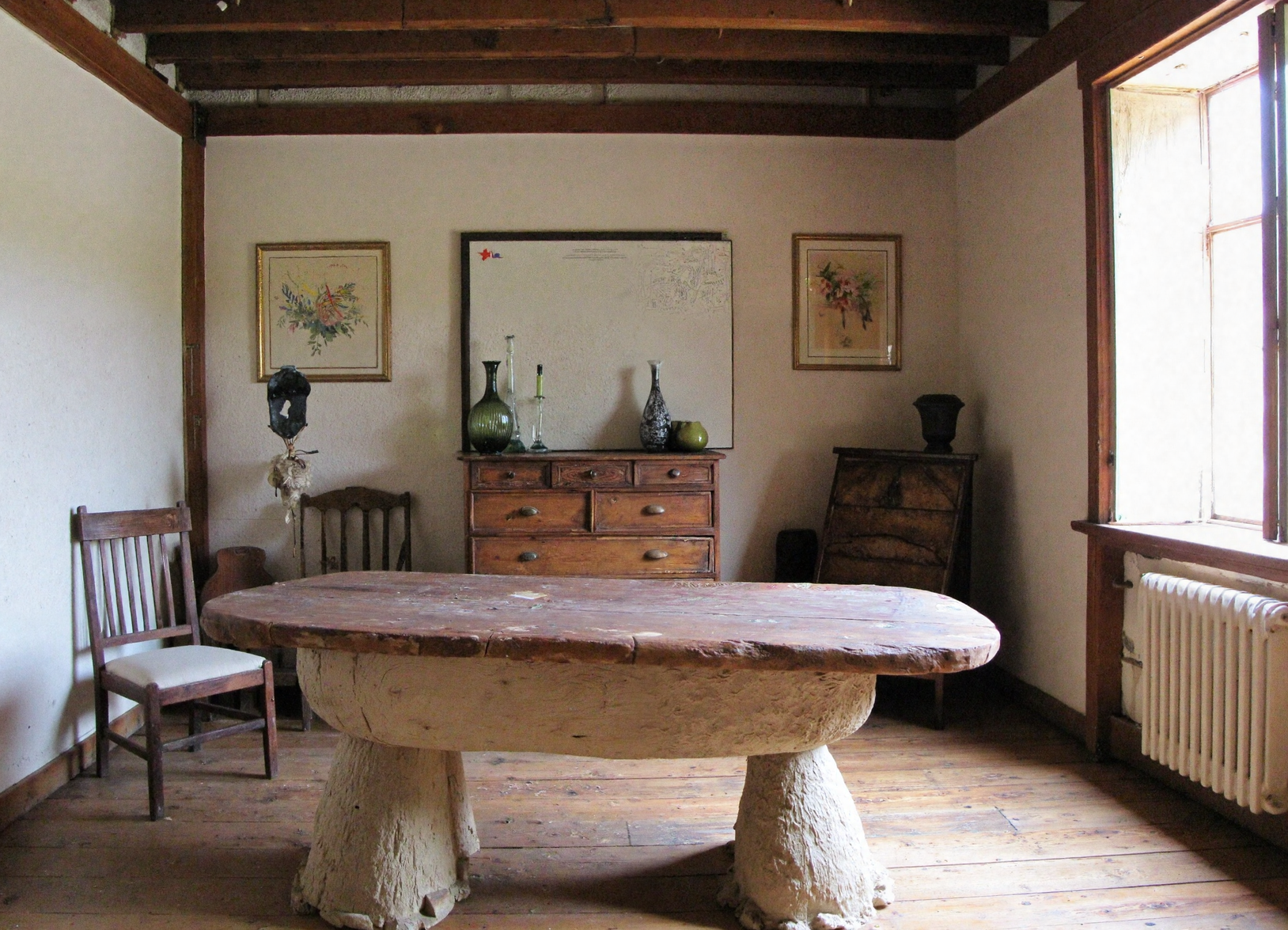
In wabi-sabi, soul is always more beautiful than sheen.
Room-by-Room:
Wabi-Sabi in Everyday Living
Living Room: A Resting Ground
A single, low sofa in flax-colored linen
A thick wool rug or tatami mat
A side table made from reclaimed wood
An old jar with eucalyptus or a dried branch
Books stacked horizontally, casually
Light dim, quiet, warm
Conversation becomes slower. Breathing becomes deeper.

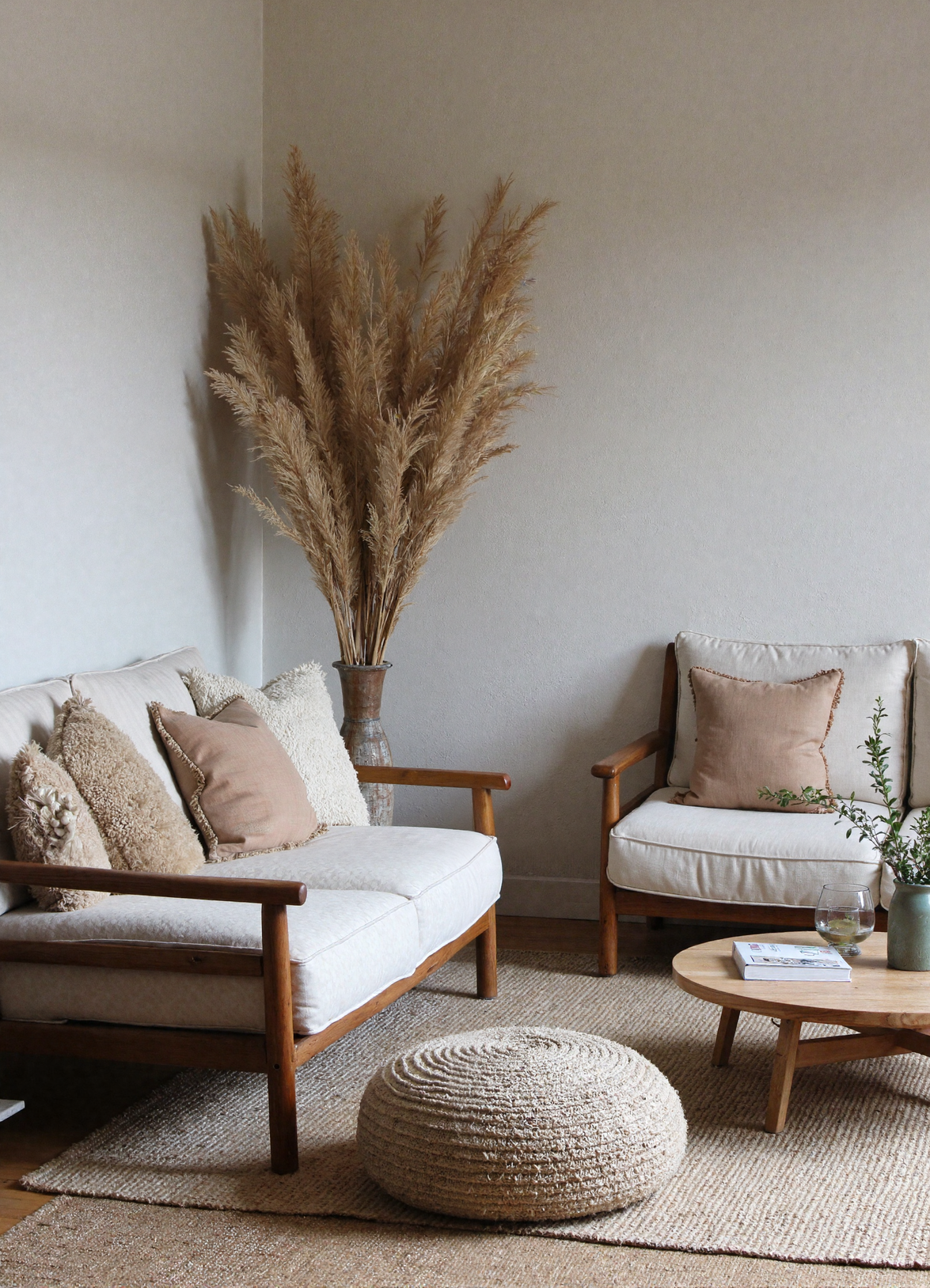
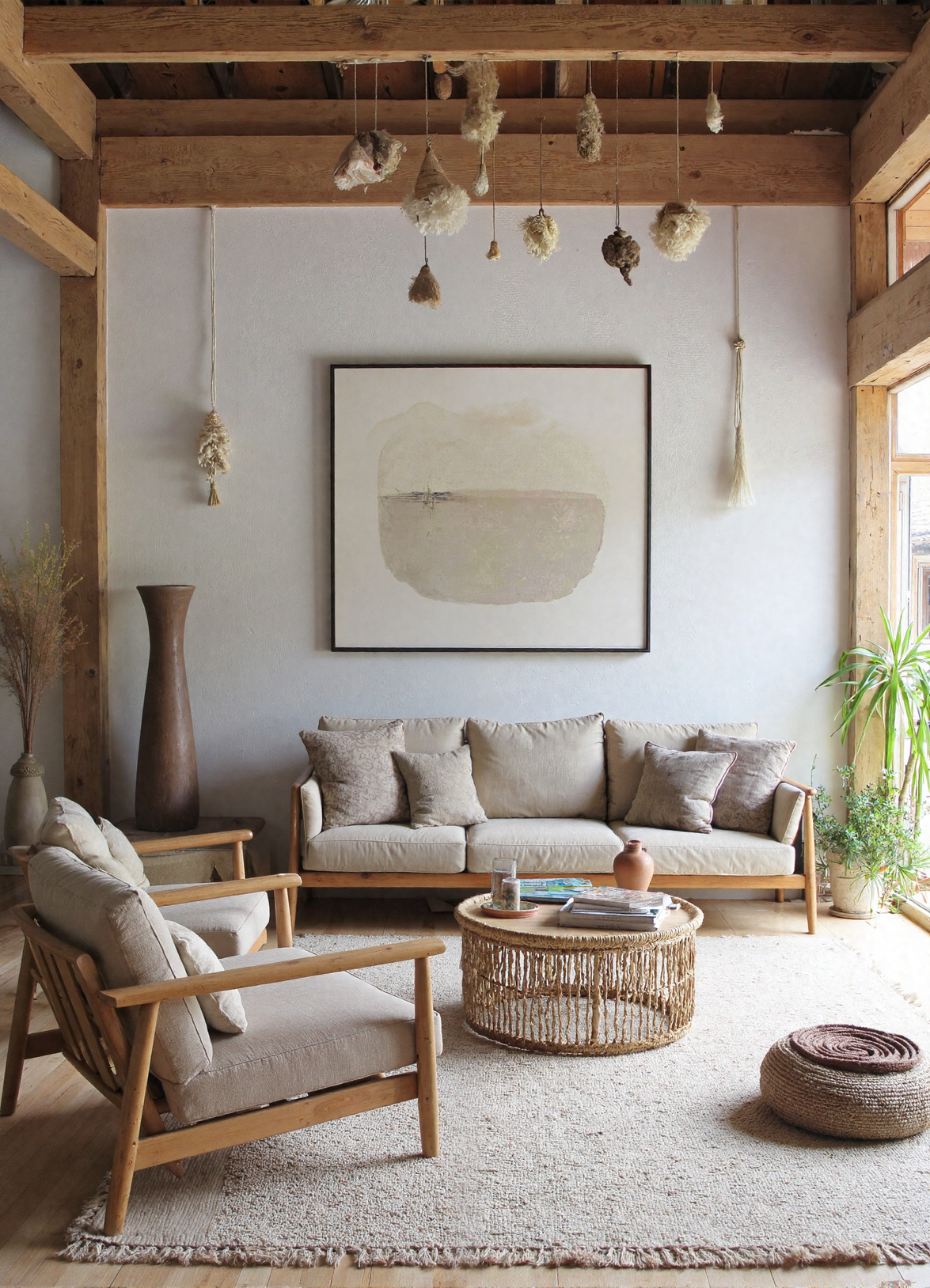
Bedroom: The Soft Retreat
A mattress on a wood platform or the floor
Linen sheets left naturally wrinkled
A ceramic bowl beside the bed with a tealight
A handmade textile on the wall
No clutter—only softness and air
This is a room for rest, not display.
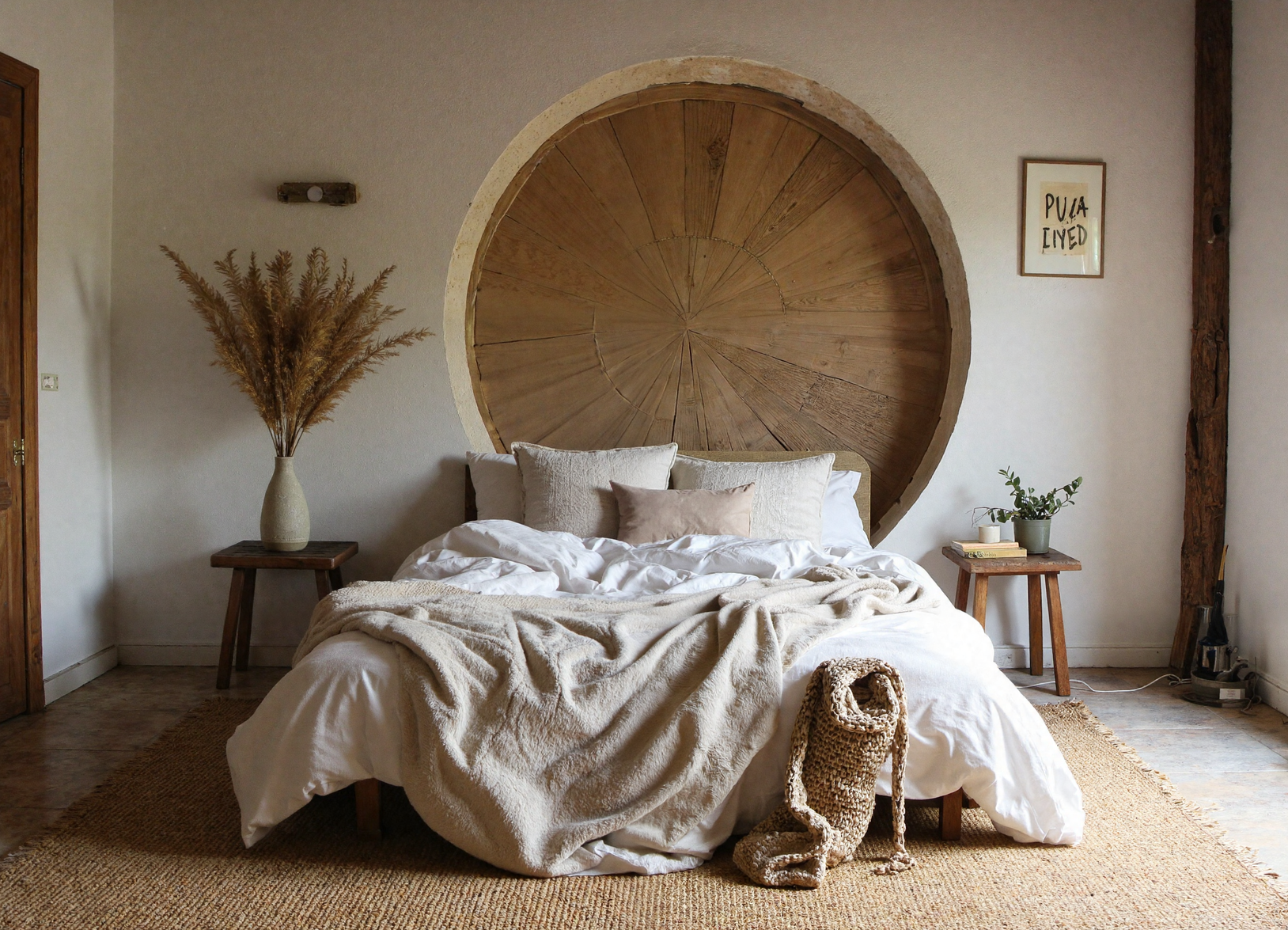
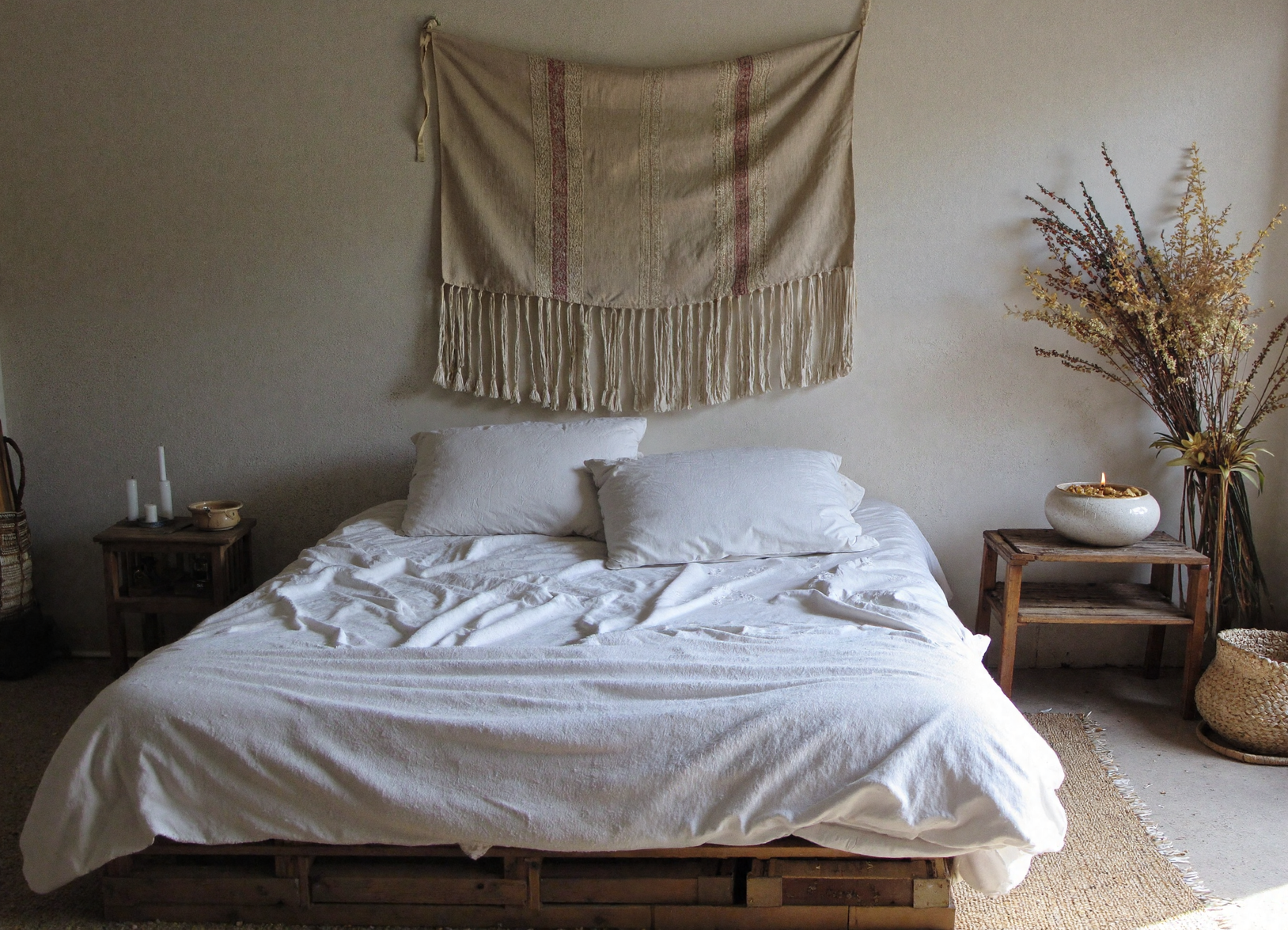
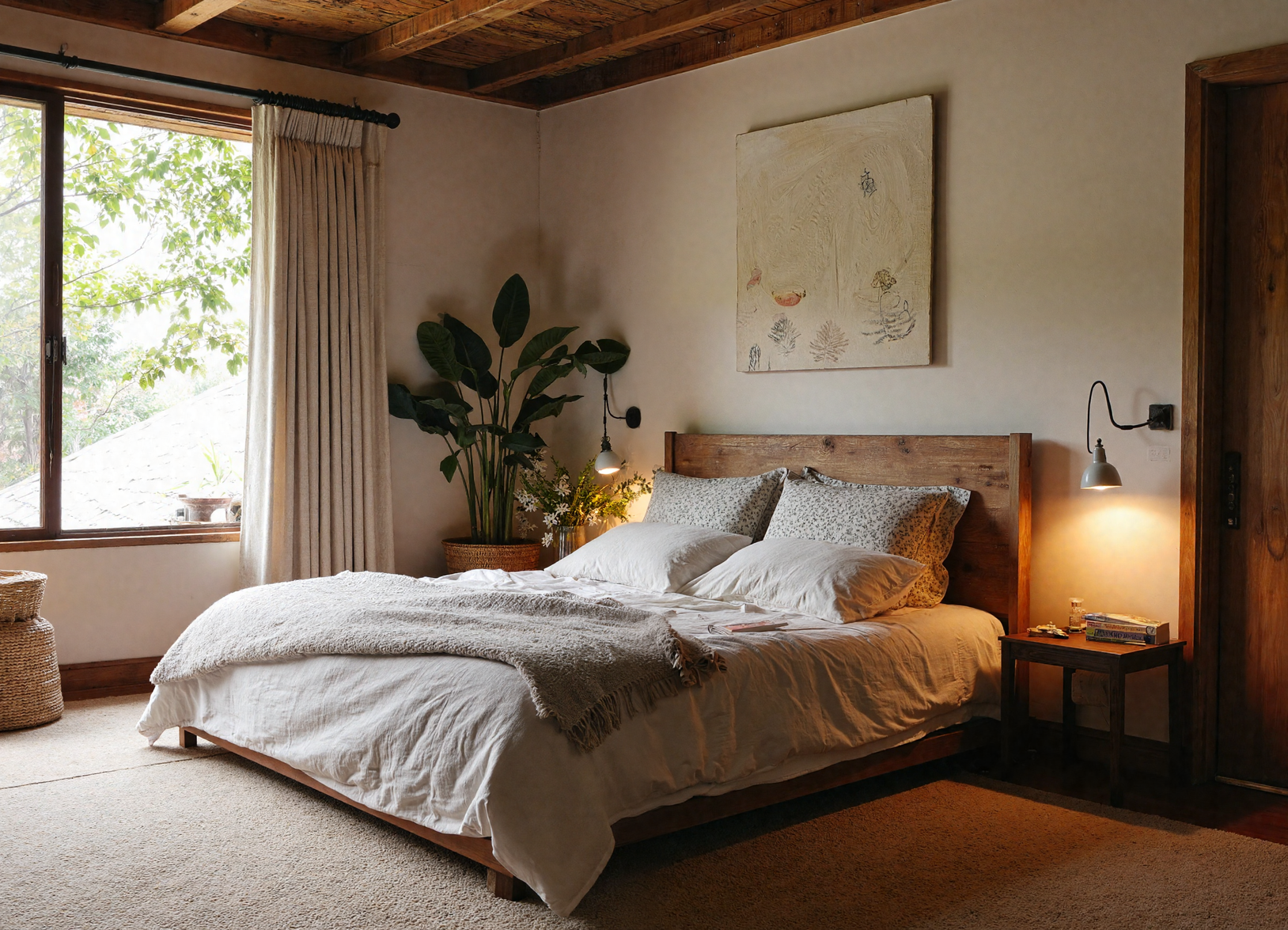
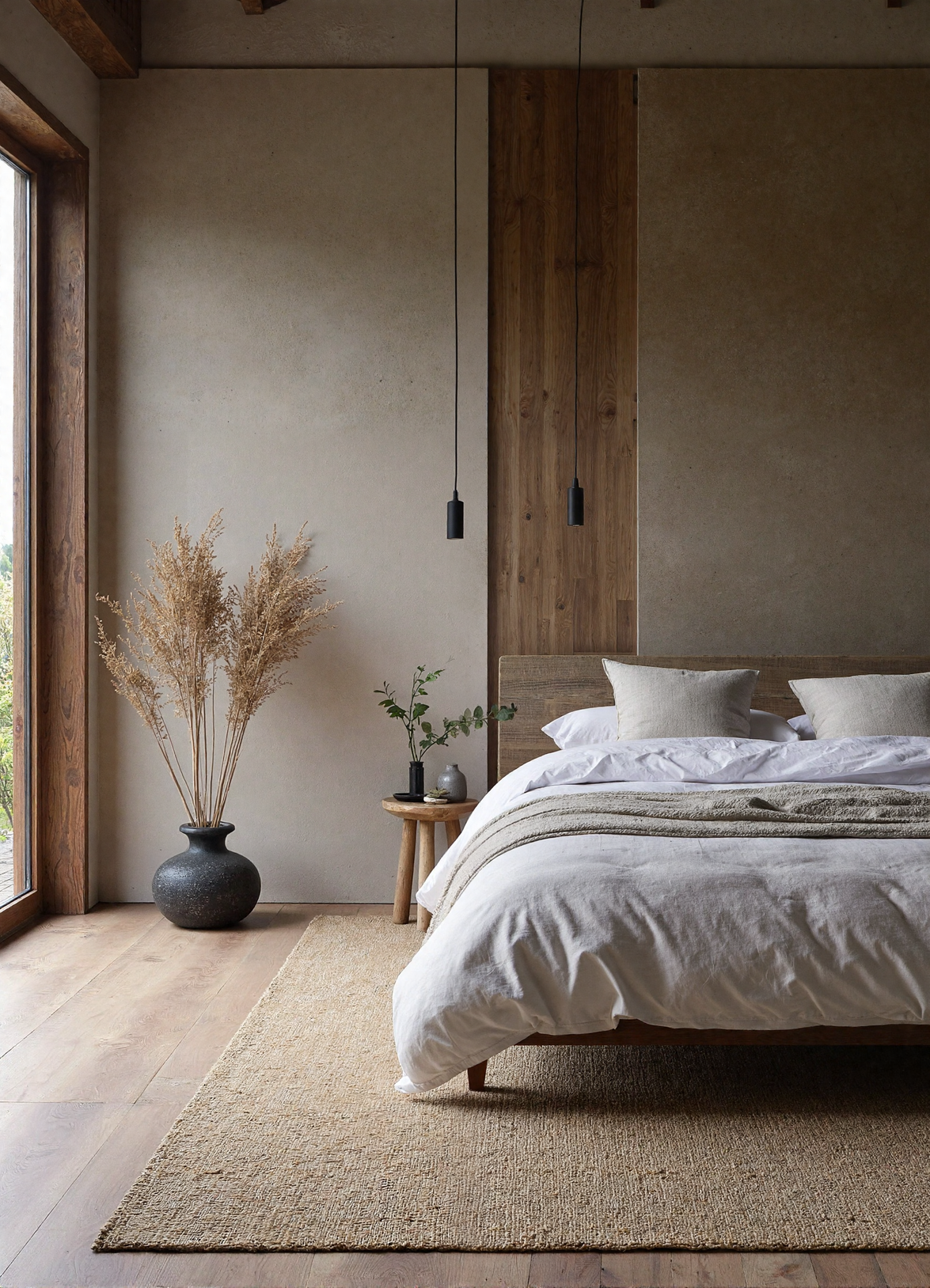
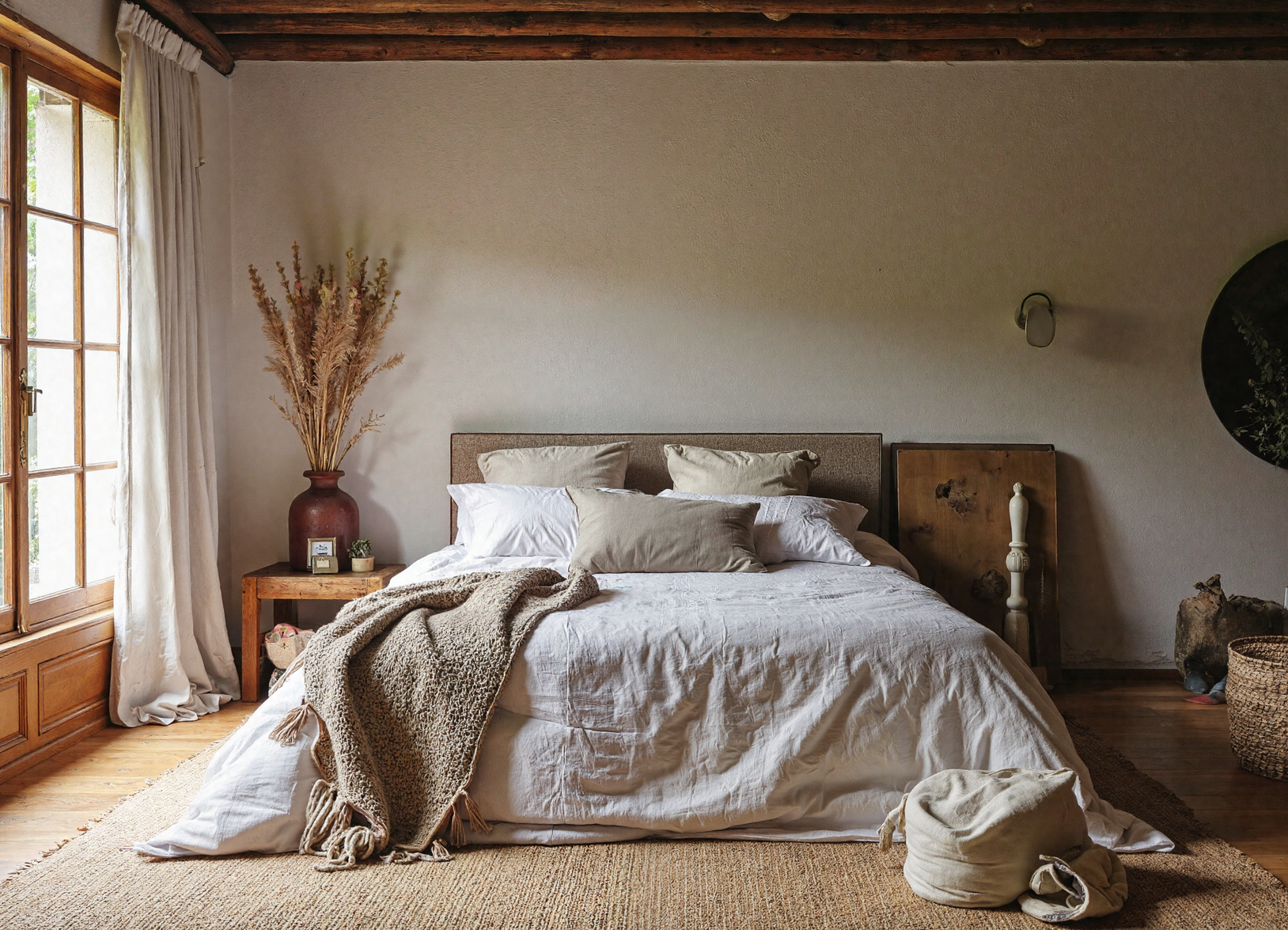
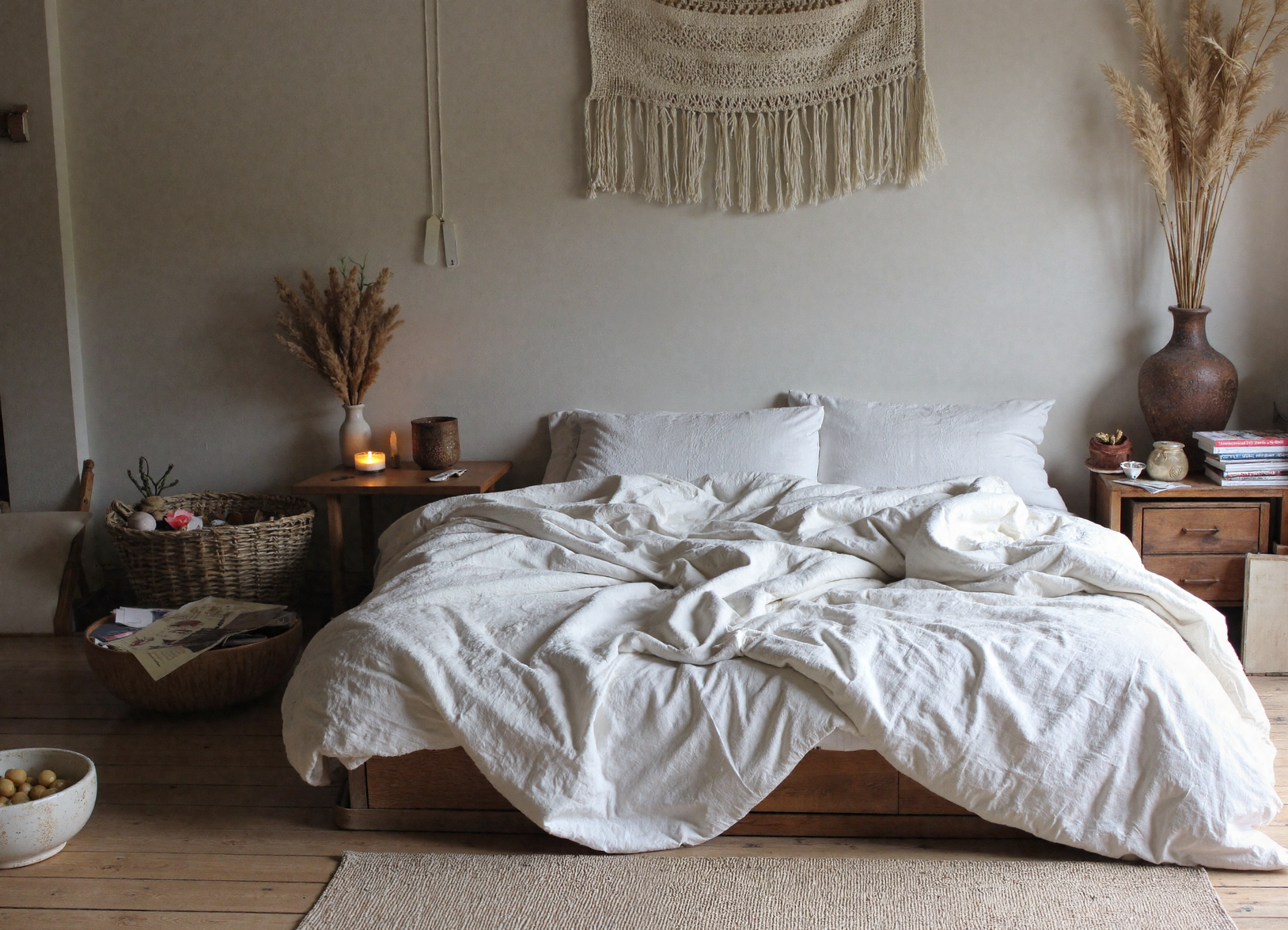
Kitchen: Ritual, Not Perfection
Open shelves with mismatched, beloved ceramics
Hand-stitched napkins and wooden utensils
A clay teapot, perhaps stained from years of use
A bundle of herbs hanging to dry
Meals served simply, shared slowly
Even washing dishes can become a meditation.
Bathroom: Sacred Simplicity
A hand-thrown bowl for soap
A linen towel on a peg
An old mirror with cloudy glass
Earthy scents: cedar, yuzu, sandalwood
Low lighting and silence
This space doesn’t just clean—it clears.
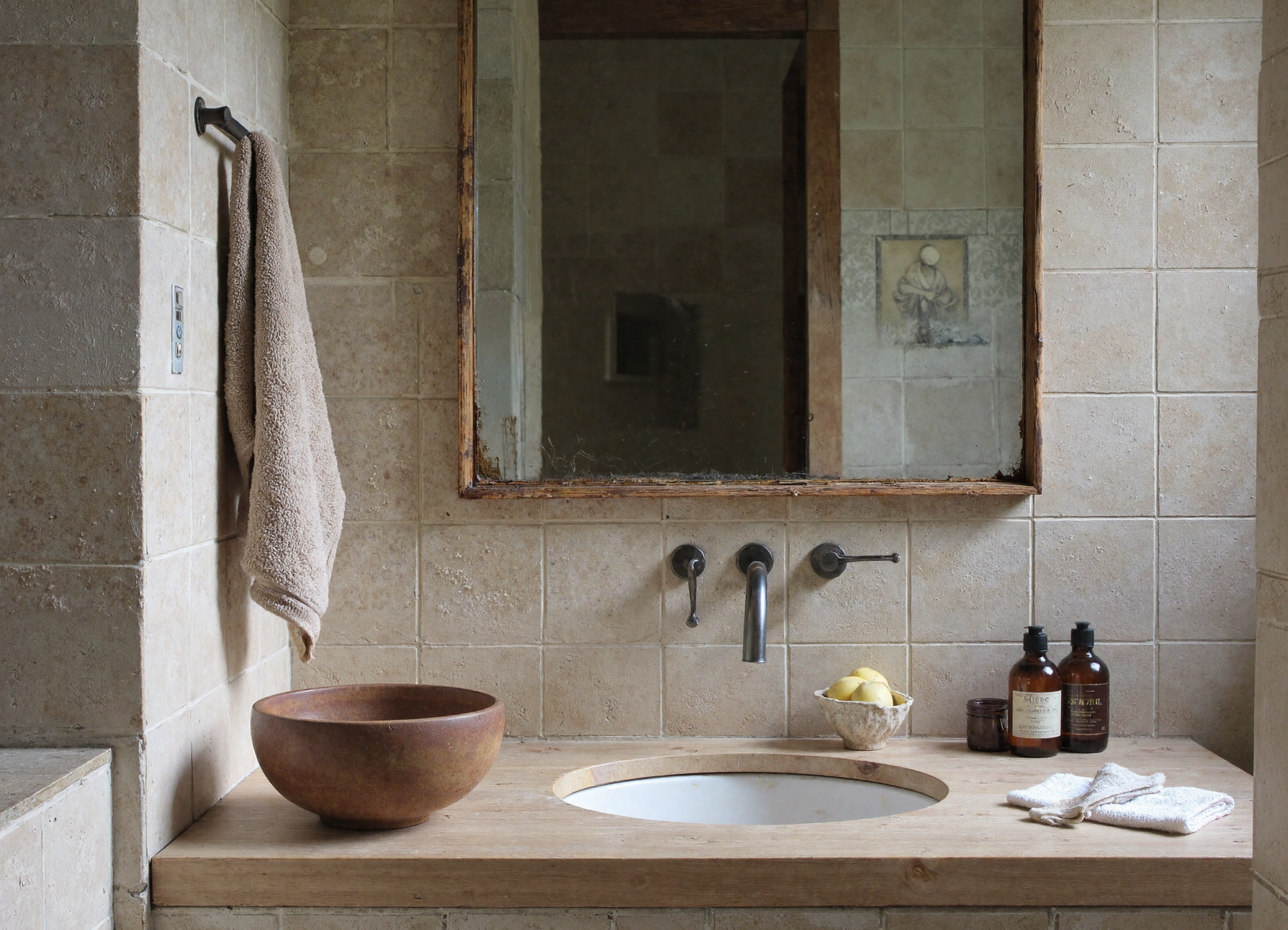
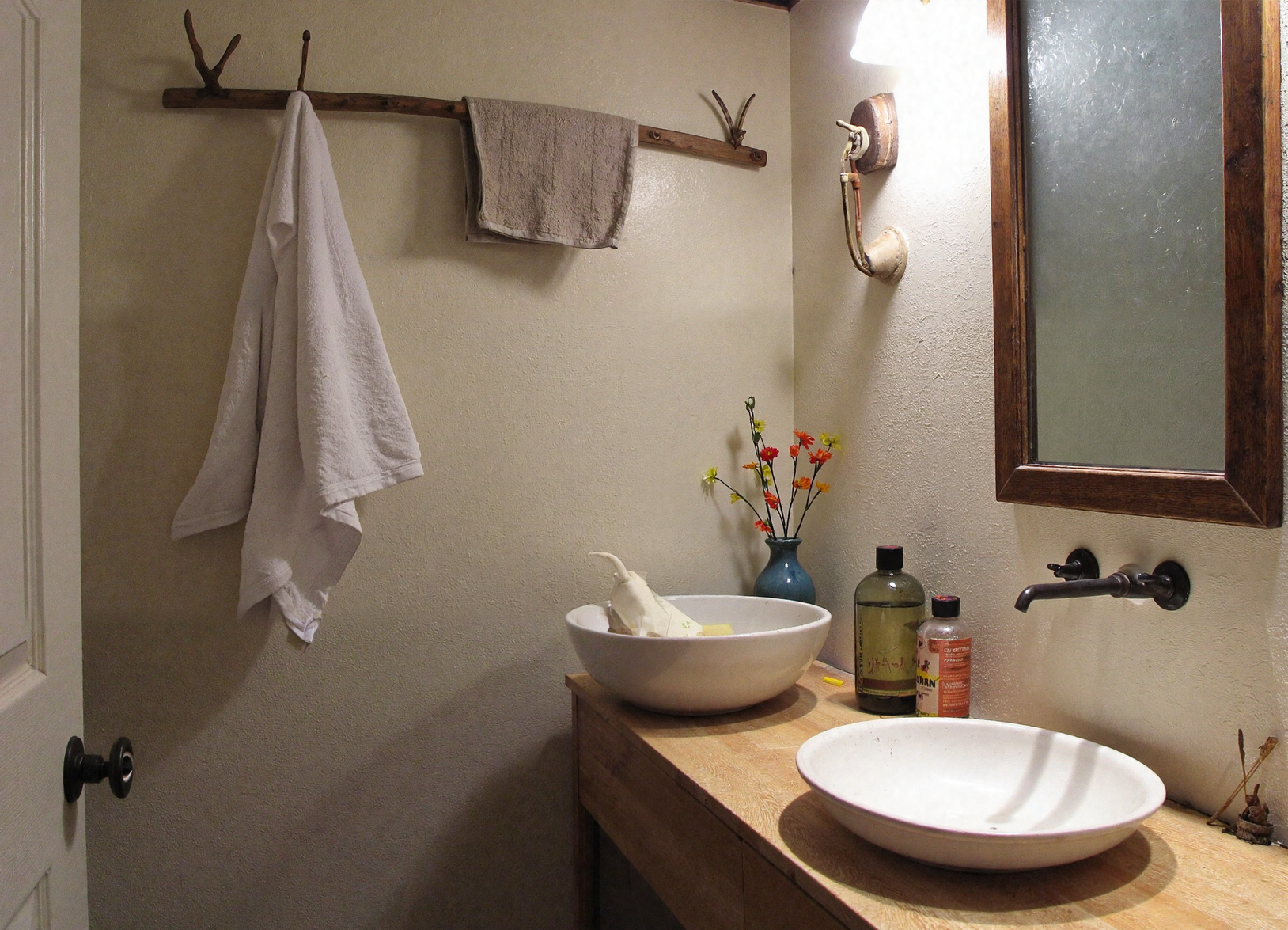
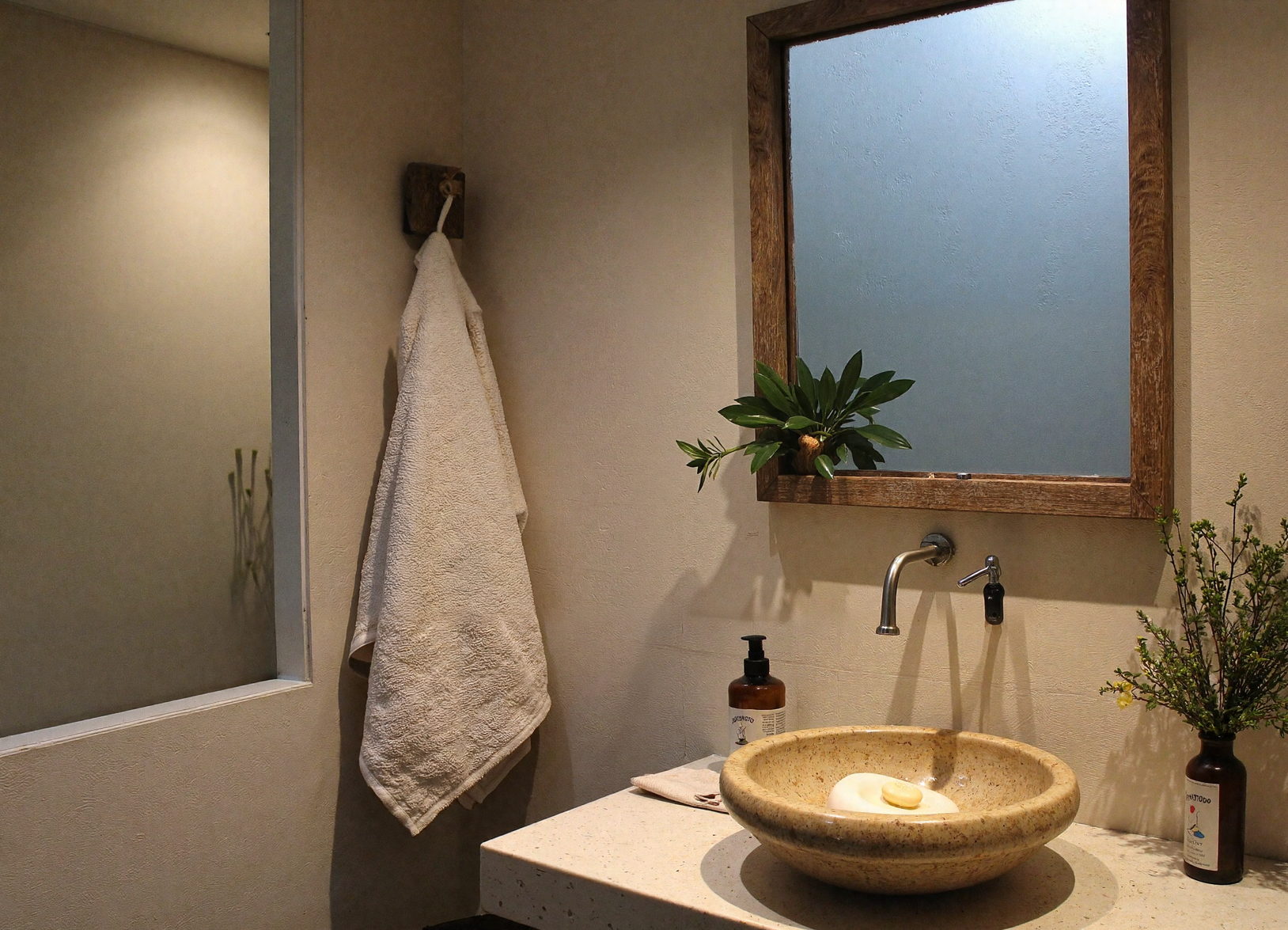
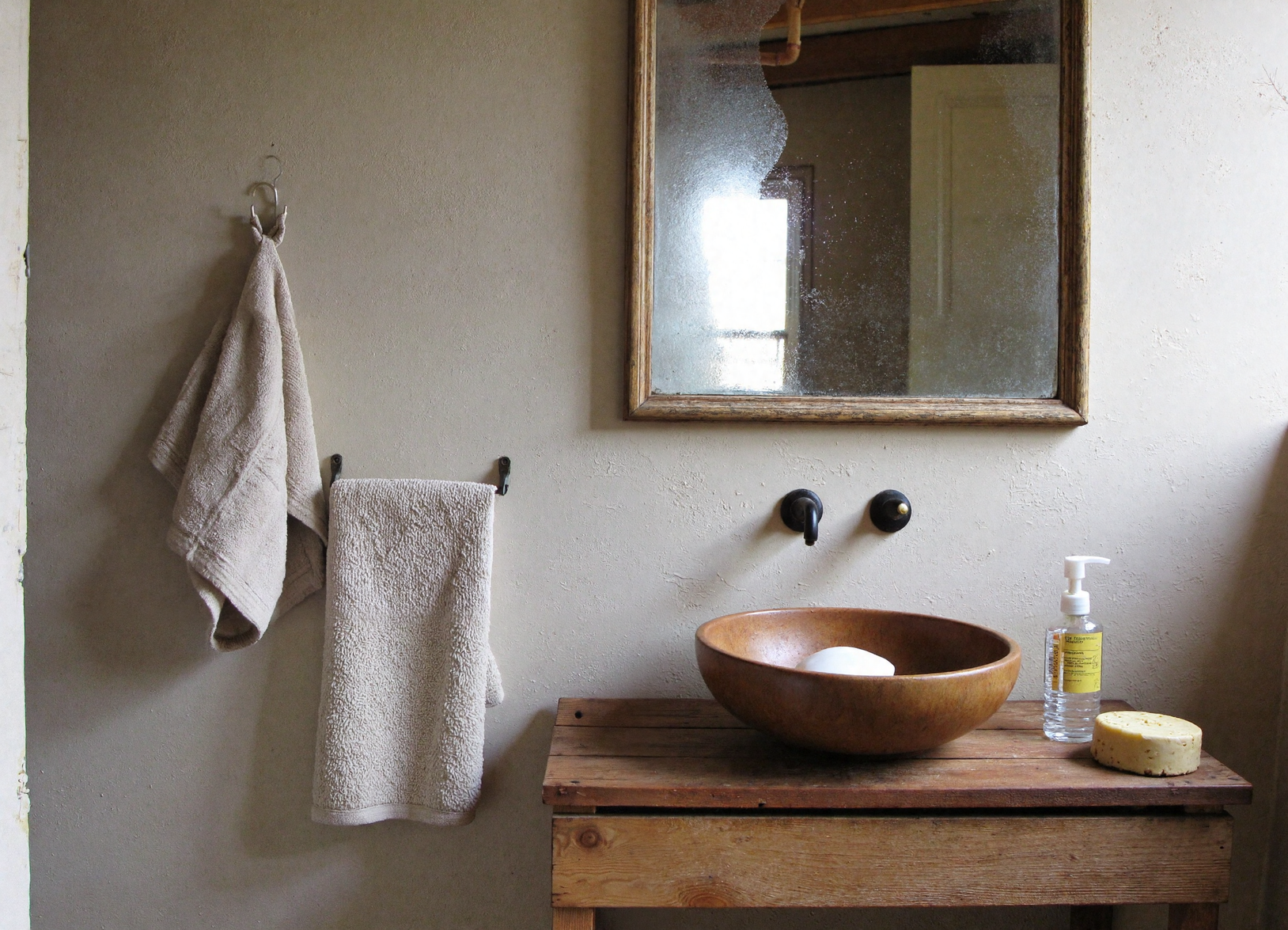
Wabi-Sabi Beyond the Walls
To live with the principles of wabi-sabi at home is to begin the journey of embracing and applying it to all aspects of life as well.
You begin to:
Accept imperfection in yourself and others
Slow down your purchases and decisions
Repair instead of replace
Prioritize quality over quantity
Feel joy in the ordinary
You begin to notice the subtle and enchanting way the light transforms as it approaches 4 p.m., how warm and comforting your favorite mug feels nestled in your hand, and how strikingly beautiful an old door can become when it creaks softly under the gentle pressure. It’s not merely an interior style — it’s a profound way of seeing the world around you. It’s about softening your perspective and returning to the essence of what truly matters.
Final Reflections:
The Quietest Kind of Beauty
Wabi-sabi embodies a philosophy that doesn’t beg for attention or seek the spotlight. Instead, it quietly embraces the beauty found in imperfection and transience, inviting us to appreciate the simplicity and authenticity that surrounds us.
It waits.
It waits in the corner of the room. In the grain of the wood. In the shadow that falls across the floor. In the gentle realization that nothing is missing.
To live in a wabi-sabi home is to give yourself permission to be incomplete—and still beautiful.
And that may be the most healing design of all.
📌 Pin this post for when you’re ready to slow down
🌾 Coming soon: “Wabi-Sabi Home Finds That Celebrate the Imperfect”

